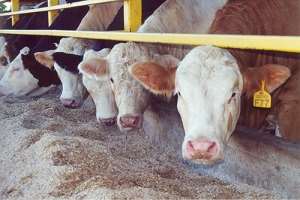As producers prepare for the Veterinary Feed Directive to go live in less than a month, Farm Director Ron Hays reached out to Dr. AJ Tarpoff, Kansas State University extension veterinarian, to get some last-minute clarification on some of his most frequently asked questions raised by producers.

“One of the first questions that typically get is, it’s understanding, ‘can I use one VFD authorization to shop around at multiple mills or distributors,” Tarpoff said. “And, the answer is no.”
He explains that one VFD order is written and it only goes to one distributor, generally whichever one you typically do business with. That’s your preference. If you happen to find a better deal out there and wish to change where you do business, Tarpoff says you will have to close out the existing VFD order and have your veterinarian write another for the new distributor. In many ways, VFD orders act much like a prescription, says Tarpoff.
“The VFD, it’s an authorization over a period of time,” Tarpoff clarifies. “The authorizations can be written for upwards of six months, and it’s not realistic for a producer to have to buy a six months’ worth supply all at one time.”
Click here to see more...